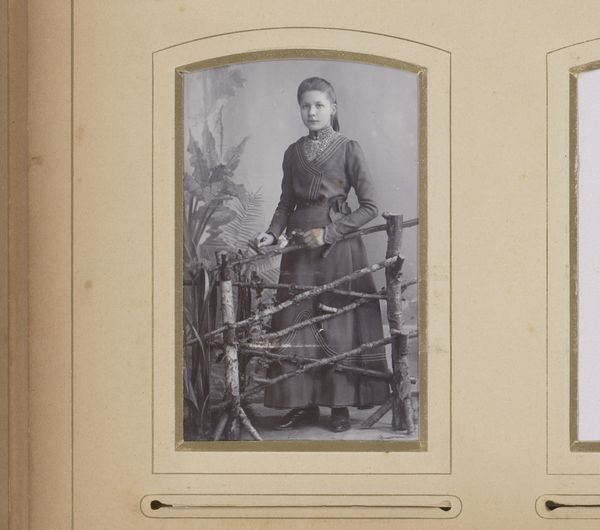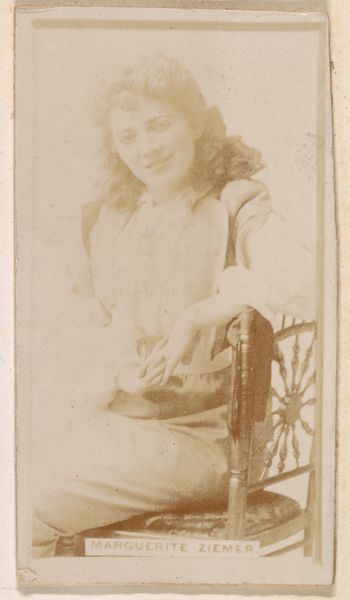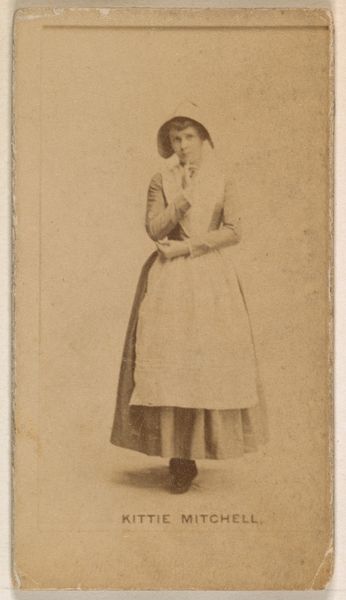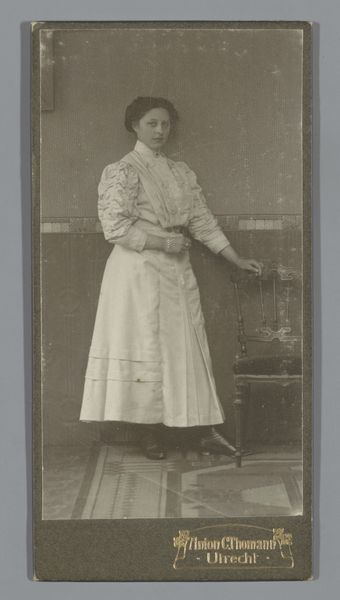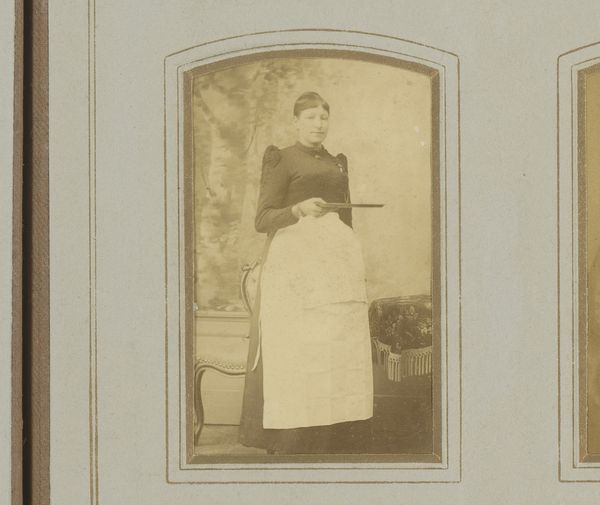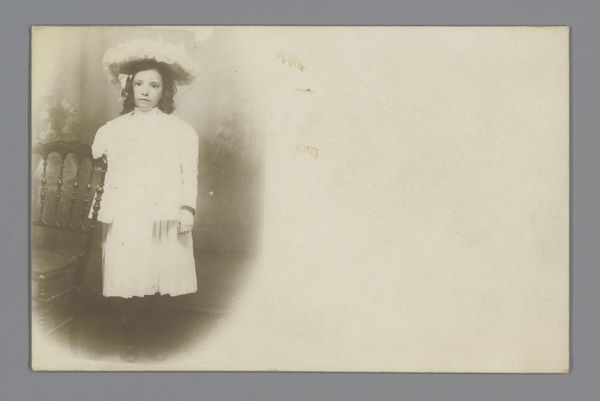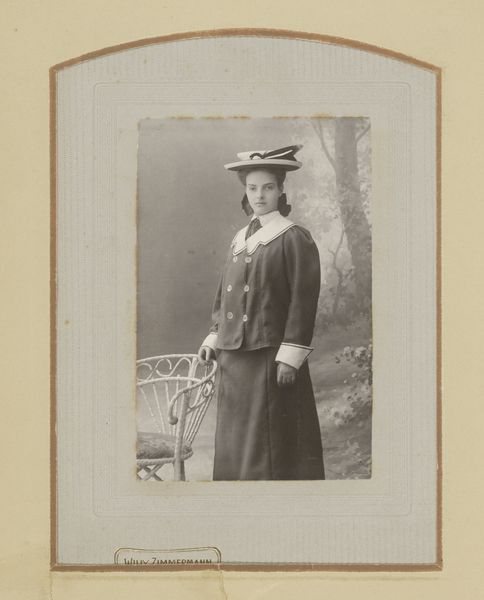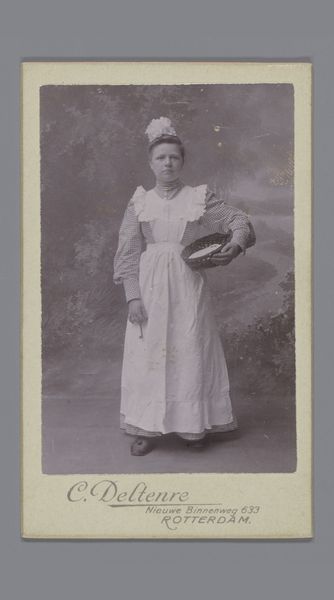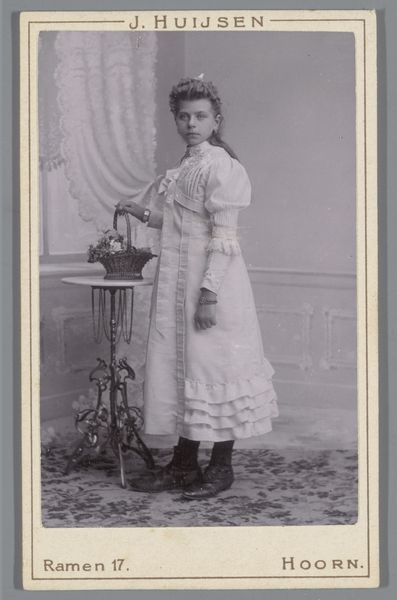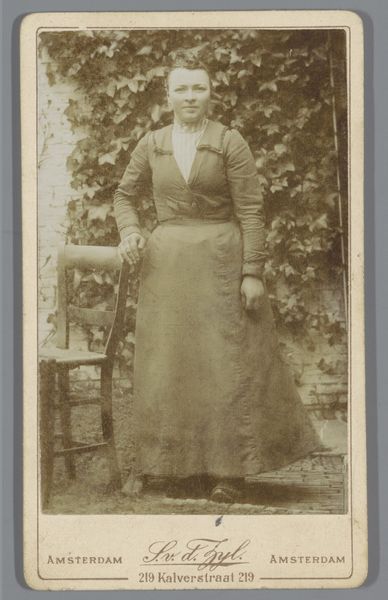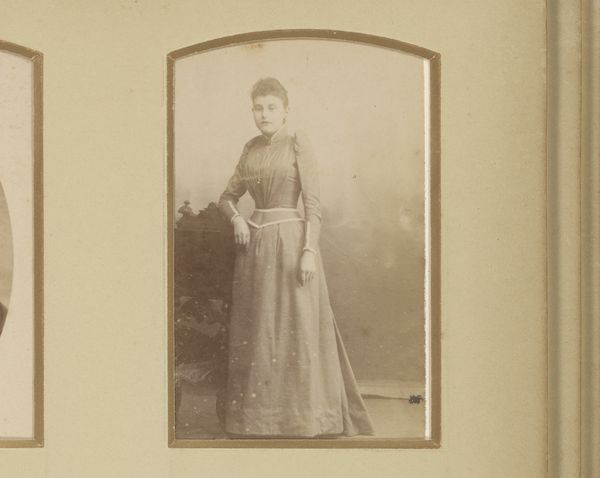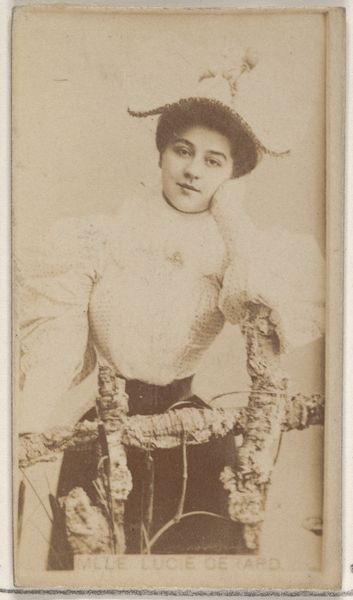
photography
#
portrait
#
pictorialism
#
photography
#
genre-painting
Dimensions: height 83 mm, width 51 mm
Copyright: Rijks Museum: Open Domain
Curator: This is an arresting pictorialist photograph entitled "Portret van een vrouw met hoed en fiets in de hand," created sometime between 1880 and 1920 by Hildur Björklind. Pictorialism often mimics painting through soft focus and evocative subjects. Editor: My immediate thought is how it encapsulates the 'New Woman' of that era. The bicycle itself is such a powerful symbol of newfound independence. It just feels charged. Curator: Indeed! The bicycle transformed social mobility, granting women increased autonomy. In a way, the bicycle served as a liberation device and iconographical element in its own right. What feelings and ideas resonate most strongly when you look at this? Editor: There's this sense of poised confidence. She's dressed formally, but there's a defiance in her stance and gaze. We could explore the way women claimed physical space at the turn of the 20th century by moving across spaces unescorted. Also, I read her clothing as part of a visual rhetoric, perhaps, indicating status while subverting restrictions. Curator: That resonates, and you’ve introduced another layer! I’d agree that her style feels calculated. She appears determined but remains elusive, suggesting societal ambivalence toward the 'New Woman.' The photographer's focus seems less on capturing her specific likeness and more on representing the modern woman's ideals during the transitional period. Editor: Precisely. I see echoes of the suffrage movement too. There's a subtle but unmistakable act of self-definition happening. Do you agree that women riding freely—challenging conventions–could be linked to contesting male dominance? Curator: Certainly! This photo subtly captures both freedom and the tension that came with it. I think our reading, by highlighting a dialogue between image, history, and psychology, helps make it even more powerful! Editor: I couldn't agree more. This image reflects evolving attitudes towards femininity, and encourages discussions of the shifting gender dynamics in art history.
Comments
No comments
Be the first to comment and join the conversation on the ultimate creative platform.
